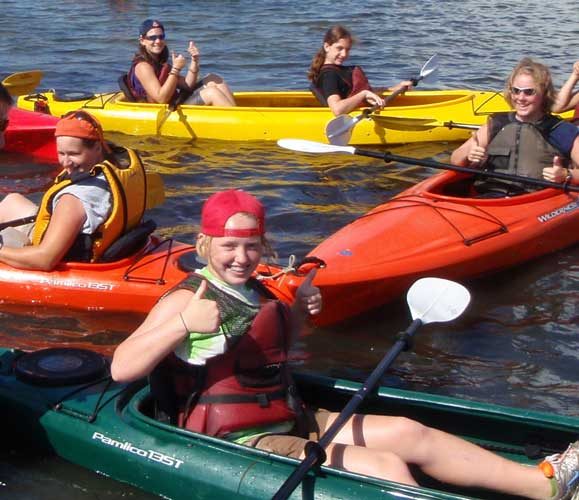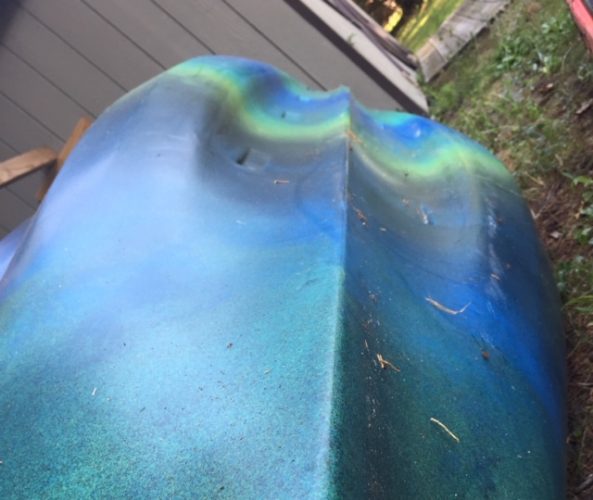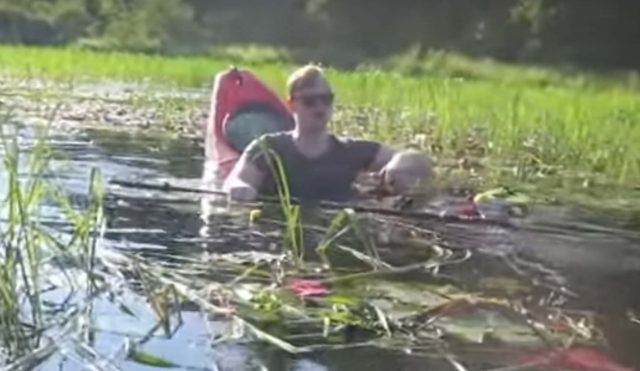If all other dimensions are equal, a sit-inside (open-cockpit) kayak is more stable than a sit-on-top kayak. In an open-cockpit kayak you’re sitting lower in the boat. Your center of gravity (aka rear-end) is at or near the level of the water. For example, when you’re sitting on the floor, unless you’ve had one too many margaritas, it’s hard to get knocked-over. But if you’re standing, anything unexpected can make you lose your balance. That’s because your center of gravity is higher.

These are sit-inside (open-cockpit) two person kayaks.

This is a sit-on-top kayak.
Many times kayak manufacturers will mitigate the higher center of gravity of a sit-on-top kayak by making it wider or by changing the bottom shape. However, both of these changes will affect the performance of the kayak. A wider kayak will be slower. And changing the bottom shape will make a larger surface area which makes it less efficient to paddle. And the added plastic adds to the weight of the boat as well.

This is the bottom of the Ride made by Wilderness Systems. It is one of the most stable kayaks out there. It is wide and the bottom shape has a pontoon design. You’re not going to win many races with this kayak, but you could almost do jumping jacks on it! (Please do not attempt jumping-jacks on a kayak!)
Why is stability important for a kayak? You will be much more comfortable paddling if you’re not worried about flipping over the entire time you’re on the water. But the consequences of capsizing a sit-on-top are much different than capsizing an open-cockpit kayak.
In a sit-on-top, as long as you have all hatches closed and sealed, if you flip over, you simply turn the kayak upright and climb back on (although climbing back on can be challenging for some folks depending on conditions). The kayak won’t fill up with any significant amount of water.
Capsizing an open-cockpit kayak can be a major problem. An open-cockpit kayak will fill up with water. If it is made by a reputable manufacturer it won’t completely sink. But it will be impossible to re-enter without first swimming it to shore and dumping it out (unless you’re with another paddler – see instructional video here). Many people think that because our inland bays are so shallow, they’d be able to touch the bottom almost anywhere. But unless you are 8 feet tall, five feet of water would still be too deep to allow you to empty your kayak and get back in.

We didn’t make this video but it definitely shows what happens when you capsize an open-cockpit kayak!
Stability, comfort, efficiency, safety, ease of transport, where and when you’ll paddle – these are all factors that you need to weigh when deciding which type will be best for you. The best answer: One of each!
~Jenifer Adams-Mitchell
